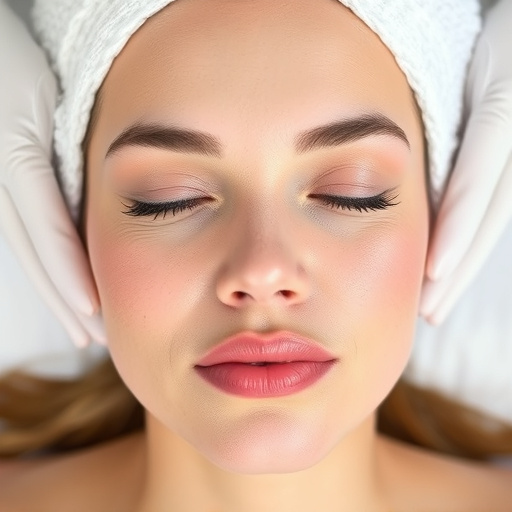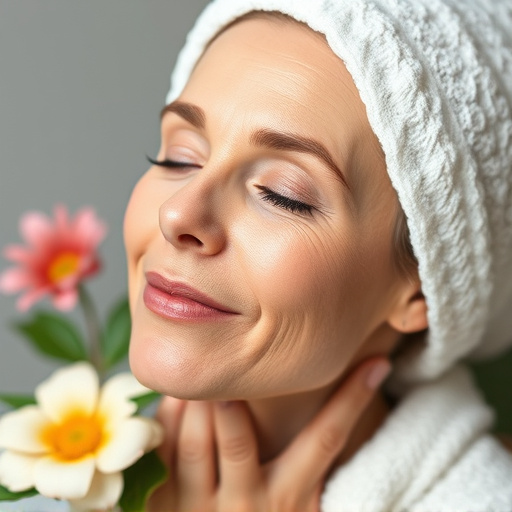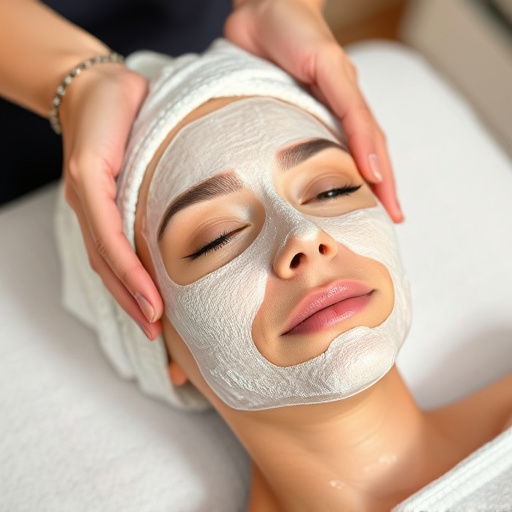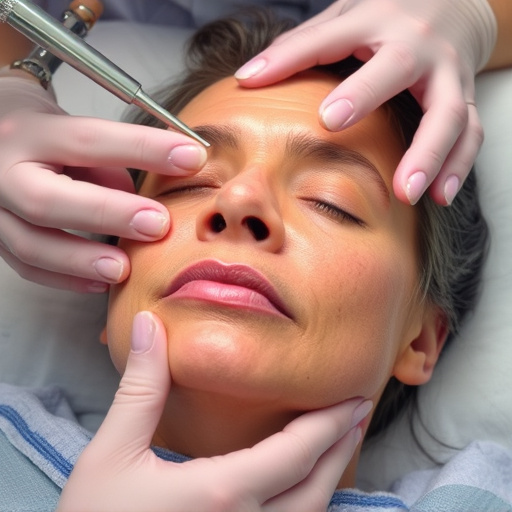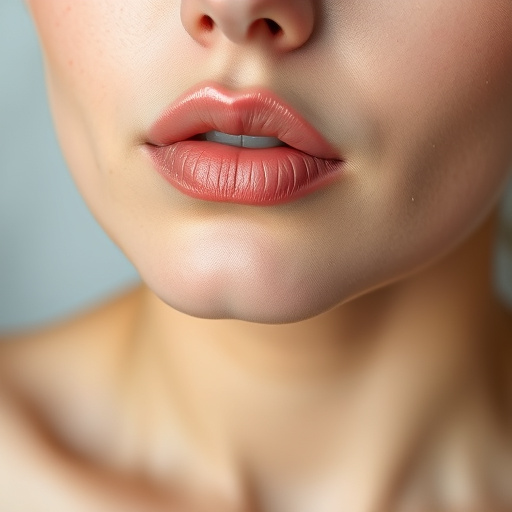Hydrating facial treatments strengthen the skin's natural moisture barrier using ingredients like hyaluronic acid and ceramides to improve hydration, reduce inflammation, refine pores, and protect against environmental damage, ultimately revitalizing and protecting the complexion. This multi-step process includes cleansing, toning, serum application, moisturizing, optional masks, and sunscreen to deeply penetrate and lock in moisture for optimal skin health.
Unveil your skin’s radiant potential with our guide to an effective hydrating facial treatment. In today’s dry, fast-paced world, maintaining a robust moisture barrier is key to healthy, glowing skin. This article delves into the science behind your skin’s natural defense system and offers a step-by-step approach to enhancing it. Discover powerful ingredients that penetrate deep to hydrate, nourish, and strengthen, leaving your complexion soft, supple, and protected against environmental stressors.
- Understanding Skin's Moisture Barrier
- Key Ingredients for Effective Hydration
- Step-by-Step Guide to a Hydrating Facial Treatment
Understanding Skin's Moisture Barrier

The skin’s moisture barrier is a complex network of ceramides, lipids, and proteins that acts as the final defense against environmental stressors and helps maintain optimal hydration levels. This protective layer is essential for skin health, preventing water loss and keeping out harmful substances while allowing necessary nutrients to penetrate. When this barrier becomes compromised, often due to factors like harsh weather conditions, aging, or certain medical conditions, the skin can become dry, irritated, and more susceptible to damage.
Hydrating facial treatments play a crucial role in supporting and strengthening this vital moisture barrier. Customized facials, designed to address specific skin concerns and needs, use active ingredients and techniques to boost hydration levels and restore balance. Medical spa services that focus on skin health often incorporate advanced technologies and natural extracts to nourish the skin deeply, reinforcing its protective abilities and promoting a youthful, radiant appearance.
Key Ingredients for Effective Hydration

When it comes to effective hydration for your skin, the key lies in understanding and leveraging powerful ingredients that can penetrate deep into the layers. A top-tier hydrating facial treatment should include components like hyaluronic acid, a natural humectant known for its ability to bind water and keep skin plump and dewy. Ceramide, another essential component, helps restore the skin’s moisture barrier, preventing water loss and keeping the complexion hydrated throughout the day.
For those dealing with issues like enlarged pores or acne, incorporating ingredients such as niacinamide into your professional skincare routine can be beneficial. Niacinamide possesses anti-inflammatory properties, helping to calm irritated skin while also improving the look of fine lines and pores. Combining these key ingredients in a well-formulated hydrating facial treatment can provide deep hydration, enhance pore refinement, and address various skin concerns, leaving your skin feeling refreshed, rejuvenated, and protected.
Step-by-Step Guide to a Hydrating Facial Treatment

A hydrating facial treatment is a comprehensive way to nourish and revitalize your skin, creating a robust moisture barrier for optimal skin health. Here’s a step-by-step guide to achieving this:
1. Preparation: Start by cleansing your face with a gentle cleanser to remove any impurities or makeup. This ensures your pores are unclogged, allowing better absorption of the hydrating products. Follow with a toner to balance your skin’s pH level and prepare it for deeper hydration.
2. Hydrating Serum Application: Use a finger or a cotton pad to apply a high-quality hydrating serum. These serums often contain powerful ingredients like hyaluronic acid, glycerin, or ceramides that deeply penetrate the skin to lock in moisture. Focus on areas prone to dryness, such as the cheeks and forehead.
3. Moisturizer and Facial Oil: Layer a nourishing moisturizer over the serum. Look for products enriched with natural oils, shea butter, or other emollients. For added hydration, incorporate a few drops of a facial oil suitable for your skin type. This combination creates an effective barrier against environmental stressors.
4. Face Mask (Optional): To enhance the treatment’s effects, consider using a hydrating face mask during the final steps. Apply it evenly to your face, avoiding the eye area, and leave it on for the recommended time. Masks can provide an intense burst of moisture, especially beneficial if you live in a dry climate or have particularly parched skin.
5. Finish with Sun Protection: Always finish your hydrating facial treatment with a broad-spectrum sunscreen with at least SPF 30. This step is crucial for maintaining the treated skin’s health and preventing further dehydration.
A well-hydrated skin barrier is key to achieving and maintaining healthy, glowing skin. By incorporating a regular hydrating facial treatment into your skincare routine, you can nourish and strengthen your skin’s natural defense mechanism against environmental stressors. With the right ingredients and techniques, as outlined in this article, you’ll be equipped with the knowledge to deliver an effective hydrating facial treatment that leaves your skin feeling supple, plumped, and protected.








